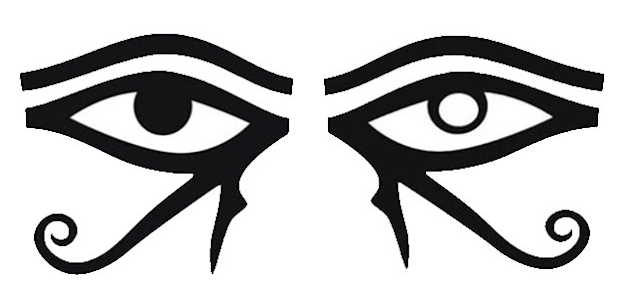2024年4月15日月曜日
Sebastian is both a given name and a surname. It comes from the Greek name Sebastianos (Σεβαστιανός) meaning "from Sebastia" (Σεβάστεια), which was the name of the city now known as Sivas, located in the central portion of what is now Turkey; in Western Europe the name comes through the Latinized intermediary Sebastianus.[1][2] It was a name of ancient Greek origin, given to children not born free and found on the streets of Sebastia. The name of the city is derived from the Greek word σεβαστός (sebastos), "venerable",[3] which comes from σέβας (sebas), "awe, reverence, dread",[4] in turn from the verb σέβομαι (sebomai), "feel awe, scruple, be ashamed".[5] Sebastos was the Greek calque of the title Augustus, which was used for Roman emperors. Sebastian became a widely used name because it was the name of Saint Sebastian, a third-century Christian martyr.
Sebastian (Latin: Sebastianus; c. AD 255 – c. AD 288) was an early Christian saint and martyr. According to traditional belief, he was killed during the Diocletianic Persecution of Christians. He was initially tied to a post or tree and shot with arrows, though this did not kill him. He was, according to tradition, rescued and healed by Irene of Rome, which became a popular subject in 17th-century painting. In all versions of the story, shortly after his recovery he went to Diocletian to warn him about his sins, and as a result was clubbed to death.[1][2] He is venerated in the Catholic Church and the Orthodox Church.
The oldest record of the details of Sebastian's martyrdom is found in the Chronograph of 354, which mentions him as a martyr, venerated on January 20. He is also mentioned in a sermon on Psalm 118 by 4th-century bishop Ambrose of Milan: in his sermon, Ambrose stated that Sebastian came from Milan and that he was already venerated there at that time. The full account of his martyrdom comes from the Passio Sancti Sebastiani, a 5th-century text written by an anonymous author, possibly Arnobius the Younger.
Sebastian is a popular male saint, especially today among athletes.[3][4] In medieval times, he was regarded as a saint with a special ability to intercede to protect from plague, and devotion to him greatly increased when plague was active.
2024年4月20日土曜日
Could we have kippers for breakfast? Sebastian?
his uncle was eaten by CANNIBALS
2024年4月19日金曜日
Hello my friend, we meet again. It's been a while where should we begin...Feels like forever
JOSEPH FIEGLEMANAMBROSE J FINNEGANDOMENICK P FIORANIJOSEPH FIEGLEMANAMBROSE J FINNEGANDOMENICK P FIORANIJOSEPH FIEGLEMANAMBROSE J FINNEGANDOMENICK P FIORANIhttps://jyado.blogspot.com/2024/04/hello-my-friend-we-meet-again-its-been.htmlhttps://jyado.blogspot.com/2024/04/could-we-have-kippers-for-breakfast.html
Il Sodoma (1477 – 14 February 1549) was the name given to the Italian Renaissance painter Giovanni Antonio Bazzi.[1] Il Sodoma painted in a manner that superimposed the High Renaissance style of early 16th-century Rome onto the traditions of the provincial Sienese school; he spent the bulk of his professional life in Siena, with two periods in Rome.
It is said that Sodoma jeered at Giorgio Vasari's Lives of the Artists and that Vasari repaid him by presenting a negative account of Sodoma's morals and demeanour and withholding praise of his work. According to Vasari, the name by which Bazzi was known was "Il Mattaccio" (the Madcap, the Maniac), this epithet having been bestowed upon him by the monks of Monte Oliveto. He dressed gaudily, like a mountebank, and his house was a Noah's ark, owing to the strange miscellany of animals he kept there. He was a cracker of jokes and fond of music, and he sang poems composed by himself on indecorous subjects.[6]
Sodomy (/ˈsɒdəmi/), also called buggery in British English, generally refers to either anal sex (but occasionally also oral sex) between people, or any sexual activity between a human and another animal (bestiality). It may also mean any non-procreative sexual activity (including manual sex).[1][2][3][4] Originally, the term sodomy, which is derived from the story of Sodom and Gomorrah in the Book of Genesis,[5][6] was commonly restricted to homosexual anal sex.[7][8] Sodomy laws in many countries criminalized the behavior.[8] In the Western world, many of these laws have been overturned or are routinely not enforced.[9] A person who practices sodomy is sometimes referred to as a sodomite, a pejorative term.
The term is derived from the Ecclesiastical Latin peccatum Sodomiticum, "sin of Sodom", which in turn comes from the Ancient Greek word Σόδομα (Sódoma).[10] Genesis (chapters 18–20) tells how God destroyed the sinful cities of Sodom and Gomorrah. Two angels sent to the cities, are invited by Lot to take refuge with his family for the night. The men of Sodom surround Lot's house and demand that he bring out the strangers so that they may "know" them (a euphemism for sexual intercourse). Lot protests that the messengers are his guests and offers the Sodomites his virgin daughters instead, but then they threaten to "do worse" with Lot than they would with his guests. Then the angels strike the Sodomites blind, "so that they wearied themselves to find the door". (Genesis 19:4–11, KJV)
Lot (/lɒt/; Hebrew: לוֹט Lōṭ, lit. "veil" or "covering";[1] Greek: Λώτ Lṓt; Arabic: لُوط Lūṭ; Syriac: ܠܘܛ Lōṭ) was a man mentioned in the biblical Book of Genesis, chapters 11–14 and 19. Notable events in his life recorded in Genesis include his journey with his uncle Abraham; his flight from the destruction of Sodom and Gomorrah, during which his wife became a pillar of salt, and being intoxicated by his daughters so they could have incestuous intercourse with him to continue their family line.[2]
、、、(爆wwwwwwwwwwwwwwwww


ミシマユキオせんせは、矢が突き刺さった香具師のその絵を見てボッキしなさったんでそ?
返信削除名は体を表すとするならば、もしトラのためにお出かけなさっているasshole氏の場合は、寧ろ自ら進んで制御棒を挿入してもらいに行った感じなのでしょうか。
返信削除ひょっとして携挙されるのは団長なんですかねw
返信削除ここに来るのは12使徒で自分はユダとかなんですかねw
ケツ毛一本の価値すらないモブがゴーマン過ぎて草
削除糖質ネイバー君は世界線ヘンコーとか言ってないで一生入院してな
焼き払われてる場所は、そういう場所なんですかね。
返信削除疫病とはうほぃものの為にある
返信削除ソドムかたった福士蒼汰サン慌ててスキャンダル流すか
おっさんずらぶに出るかするかもね
オッスな感じであっすと言うようにしてみたらどうだろう?
返信削除セバス・チャンとは、丸山くがね作のライトノベル『オーバーロード』の登場人物である。
黒の燕尾服を纏った、白髪白髭の古典的老執事。顔立ちは彫が深く、一見して柔らかくありながらも厳粛なイメージを持ち、その双眸は猛禽の様に鋭い。両手には白い手袋を着けている。
王都に常駐していた頃は、その整った容姿と洗練された立ち居振舞いから年齢を問わず女性達にモテまくっていた。
普段の姿は人間形態を取っているのに過ぎず、真の姿は竜人。怒りに触れられると目が赤くなる